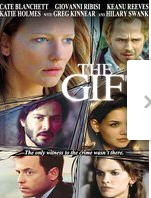Drive, the movie, featured disturbing gore, Albert Brooks as a notable villain, and too-long stretches of Ryan Gosling and Carey Mulligan making cow eyes at each other. It's pretty good but if you backtrack to director Nicolas Winding Refn's "Pusher Trilogy" you can see how the director deliberately, possibly subversively, "went Hollywood." If you want to experience Drive without the sentimental goop, I recommend the Pusher films and also James Sallis' source novel, also titled Drive. (And the book's sequel, Driven.)
Keith Rawson has a good rundown on the Drive book/film differences. Sallis is a writerly writer in the Cormac McCarthy mold who is also a fan of Richard Stark. The Driver character resembles Parker with backstory -- mostly melancholy. Driver is far less zombie-like in the books than Gosling plays him.
One lingering question about Drive, the book, and please email if you have any thoughts. A character is introduced late in the story named "Eric Guzman." There is an earlier character named Standard Guzman (Standard Gabriel in the movie -- Mulligan's creepy husband played by Oscar Isaac.) Who the hell is Eric Guzman supposed to be? Is this Standard back from the dead? A fake name used by mobsters trying to track down Driver? Both? Neither? Very little is said between Driver and another character, "Doc," to explain who "Eric" was and what happened to him. Did Driver "take him out"? The barely-explained reappearance of the Guzman name (and there is a third Guzman mentioned -- Eric's brother Noel, who Doc supposedly fixed up medically) in a novel with a Pulp Fiction-style scrambled chronology throws off the rhythm of the scrambling so the result, for this reader, was confusion as to when events were taking place. Again, would appreciate others' thoughts.

